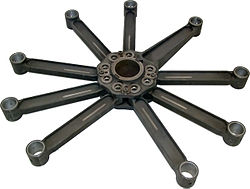This article needs additional citations for verification .(December 2020) |
| BMW 132 | |
|---|---|
 Preserved BMW 132 at the BMW Museum | |
| Type | Radial engine |
| National origin | Germany |
| Manufacturer | BMW |
| First run | 1933 |
| Major applications | Junkers Ju 52 |
| Number built | >21,000 |
| Developed from | Pratt & Whitney R-1690 Hornet |
| Developed into | BMW 114 |
The BMW 132 was a nine-cylinder radial aircraft engine produced by BMW starting in 1933.


